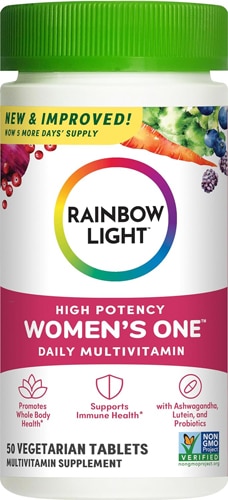The female body is capable of amazing feats, such as the capacity to grow another human. But it’s also vulnerable to a gamut of serious diseases that strike women more often than men. Of course, not everyone’s body can be sorted into a rigid male-female binary. But typically, the following five conditions impact women more frequently than men.
Common Women's Health Issues
1. Osteopororis
Who gets it?
According to the Office on Women’s Health, Osteoporosis affects more women than men. Of the estimated 10 million Americans with osteoporosis, more than 8 million (or 80%) are women.
Why are women more prone to it?
Women are typically thinner than men, which means their bones are already less dense to begin with. Because women have longer life spans, as they age they become more susceptible to loss of bone mass. Finally, after menopause women’s levels of estrogen drop significantly. Estrogen has a protective effect on bone density, so lower levels of estrogen means weaker bones.
How can I prevent it?
Calcium and vitamin D are your bones’ best friends. Make sure you get enough of each daily, as your body can’t absorb calcium without adequate levels of vitamin D. Keep alcohol to moderate levels, as alcohol, by interfering with the balance of calcium, can lower bone density. Finally, staying fit and physically active by enjoying weight bearing activities is one of the most effective ways to strengthen your bones.
2. Alzheimer’s
Who gets it?
Almost two-thirds of Americans with Alzheimer’s disease are women.
Why are women more prone to it?
The gap has largely been attributed to the longevity of women, since age is the number one risk factor for Alzheimer’s. But recent research suggests that genetics may be a factor. Another reason for the gender discrepancy may be other risk factors that affect only women, such as surgical menopause and pregnancy complications like pre-eclampsia, both of which have been linked to cognitive decline in later life.
How can I prevent it?
Mental and physical stimulation is one of the best ways to stave off cognitive decline. Also, loneliness can increase your risk of Alzheimer’s, while consistent social contact (visiting friends, talking on the phone) may reduce it.
3. Depression & Anxiety
Who gets it?
Women are twice as likely as men to be diagnosed with depression. Part of the gender gap can be explained by differences between men and women in power and status, as well as different cultural expectations of workload. Depression and anxiety can be seen as two sides of the same coin and in fact frequently co-occur. Depression ruminates on the past, while anxiety ruminates on the future. Many mental health experts suggest that depression/anxiety occurs when we feel disconnected from our sense of purpose—in other words, are soul.
Why are women more prone to it?
Changing hormone levels, both menstrual and dips after giving birth, and before and during menopause heighten a tendency toward depression. Differences in how women think and process emotions, as well as internalizing stress, can also affect brain functioning in areas responsible for mood.
How can I prevent it?
If you suspect you are anxious or depressed, discussing your symptoms with a mental health specialist is a good first line of defense. Often, milder forms of depression get better after a few months of therapy. Exercise is also considered an effective tool for combatting depression. According to the Office on Women’s Health, many researchers think that regular exercise can lower your risk of getting depression and help many depression symptoms get better.
4. Urological problems
Who gets it?
According to the New York Times, “In reproductive years, women are 50 times more likely than men to have a urinary tract infection; later in life, the ratio drops to 2 to 1, as men wind up having surgical procedures on their prostate, or catheters, that more easily expose their urinary tracts to infection.” Many women experience more than one infection during their lifetimes.
Why are women more prone to it?
Anatomy is largely responsible for why women get more urinary tract infections (UTIs) and incontinence, or bladder leaking, than men. Blame it on the proximity of a women’s urethra to her rectum, where bacteria found in fecal residue can easily transfer to her vagina.
How can I prevent it?
Best way to prevent a UTI is to wipe from front to back after using the bathroom. Underpants with a cotton crotch are better than synthetic material. Avoid tight-fitting pants, which trap moisture. Change out of wet bathing suits and workout clothes quickly. Avoid douching or using feminine hygiene sprays.




